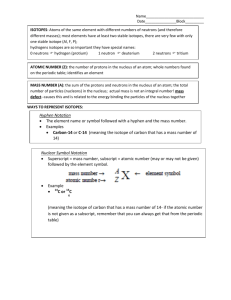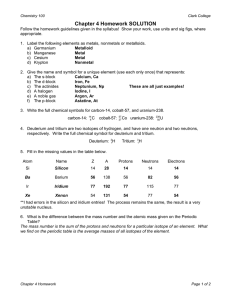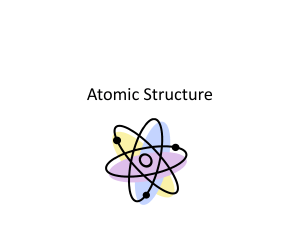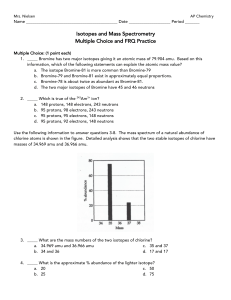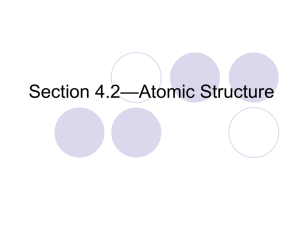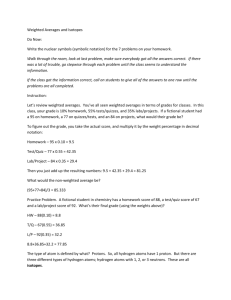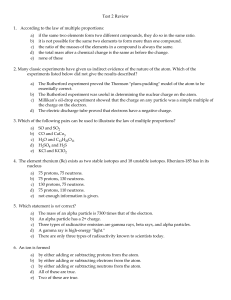Atomic Theory
advertisement
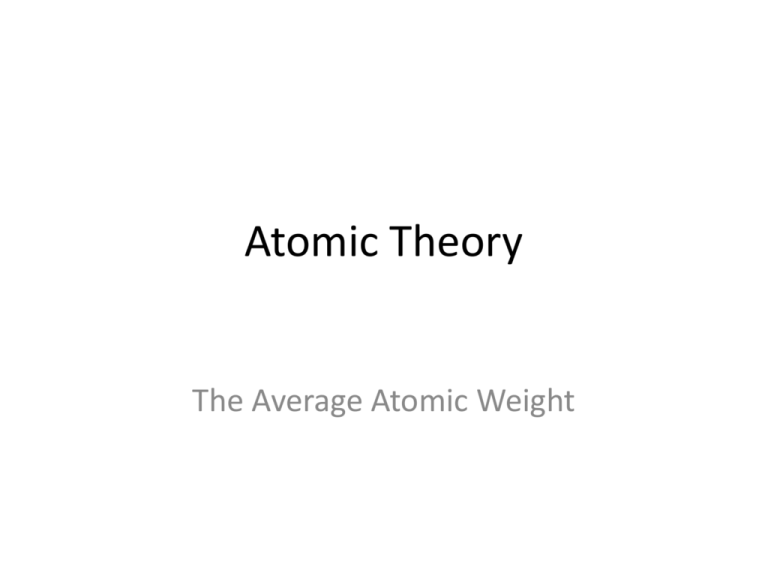
Atomic Theory The Average Atomic Weight A Quick Review • We have covered the structure of the atom. – It has a nucleus where the protons and neutrons are located – It has an electron cloud where the electrons exist • We have the following definitions: – Atomic Number: tells us the number of protons in the atom’s nucleus – Mass Number: tells us the sum of the protons + neutrons in a given nucleus of a specific isotope. First New Concept • Chemistry has invented a unit of mass for atoms. • It is called the “atomic mass unit” or “amu” . • You should know that both the proton and the neutron have a mass of 1 amu. • Each proton “weighs” 1 amu. • So does each neutron. • Therefore, if an atom has 8 protons and 8 neutrons, its mass will be described as 16 amu. • Important to know that the mass of electrons is essentially “zero” – they are so small that we ignore their mass in this calculation. Finishing this 1st Concept • If we look back at the previous slide, we see that the mass of that atom was calculated by adding the number of protons and neutrons together and calling the result the mass in amu’s. • We already know that the sum of protons + neutrons is called the Mass Number. • Therefore, we can simply state that the mass of any isotope is simply that atom’s mass number in amu’s. Part II – The Other Number on the Periodic Chart 17 ________________________ Cl ________________________ 35.453 ________________________ Consider this: 17 Cl 35.453 The element Chlorine exists as two isotopes. • Chlorine – 35 which weighs 35 amu • Chlorine – 36 which weighs 36 amu The question to be asked is where does the 35.453 come from? The Answer: • The answer to the question on the previous slide is that the atomic weight that appears on the periodic chart is actually a “weighted average”. • It takes into account two different factors: – The actual weight of the individual isotopes – What percentage of the entire element is the individual isotope. Consider the Following Scenarios 90 90 90 90 90 90 90 90 90 90 What would the average score on this test be? Now This One: 90 90 90 90 90 80 80 80 80 80 What about the average of this test Consider this set: 90 80 90 90 90 80 90 90 90 80 Back to the Chlorine 17 Cl 35.453 If Chlorine exists as Cl – 35 and Cl – 36 and the average atomic weight is the 35.453 , which statement is correct? a. There is more Cl – 35 than there is Cl – 36. b. The Cl – 35 and the Cl – 36 exist equally. c. There is more Cl – 36 than there is Cl – 35. State Expectations 5 B 10.811 1. Looking at the atomic weight, what two isotopes are likely for this element? 2. Based on your answer to #1, which of the isotopes is more common? Next:




